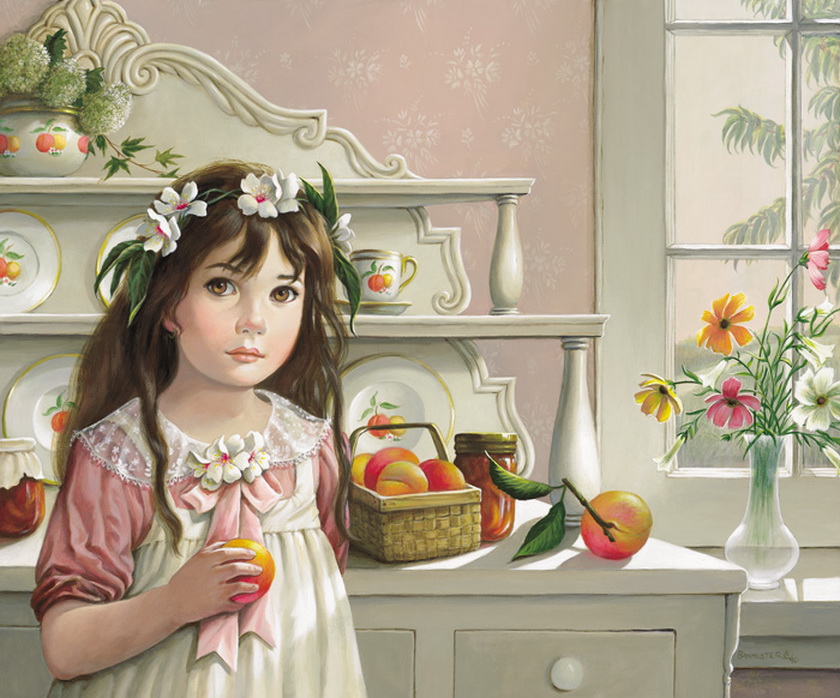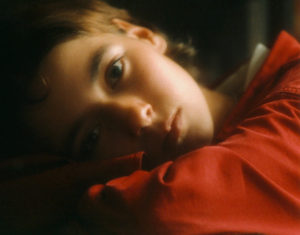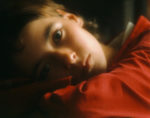The writer Ernest Dowson (1867–1900) was a lover of young girls, his deep feelings for them are expressed in several of his poems, notably those that I published from his three collections Poésie Schublade, Verses, and Decorations. More insight can be gained from his correspondence, namely The Letters of Ernest Dowson edited by Desmond Flower and Henry Maas, and New Letters from Ernest Dowson edited Desmond Flower.
He can be presented by his own words about the lawyer William Clarke Hall (Letters, no. 115, page 164: To Victor Plarr, September 6, 1890):
I must bring him to see you as he is a charming person & properly a worshipper & devout follower of the most excellent cult of la Fillette.
Before Adelaide

Before he met Adelaide Foltinowicz in November 1889, Dowson was a devoted fan of the child actress Minnie Terry, then aged 7 (she was born on January 1, 1882), see my article Ernest Dowson and the Cult of Minnie Terry. His adoration of little girls was exclusive, it did not extend to teenagers or adult women. The fact that girls grow up into adulthood frightened him, as he wrote to Charles Sayle on October 1, 1888 (New Letters, no. D1, pages 4–5):
There are, as you say, still books, dogs and little girls of seven years old in it but unhappily. One begins to yawn over the books and the dogs die and, oh Sayle, Sayle—the little girls grow up, and become those very objectionable animals, women.
That same exclusivity for girls before the “magical age 10” was expressed to Arthur Moore on June 30, 1889 (Letters, no. 53, page 88):
Du reste I return comme on revient toujours, à mes anciens amours. I think it possible for the feminine nature to be reasonably candid & simplex, up to the age of 8 or 9. Afterwards—phugh!
In 1889 Dowson made “experiments” of platonic love with two teenage girls, first Lena, a barmaid, then Bertha van Raalte, the daughter of a tobacconist. But these relations did not last long, he was not really motivated. Of the relation with Lena, one can remember the following jest written to Arthur Moore on April 14, 1889 (Letters, no. 33, page 67):
Society must be in a parlous state when one can only secure privacy for one’s Platonics in the Underground Railway.
Dowson had an ambiguous attitude towards women. On the one hand he felt sexually attracted to them, on the other hand he rejected them sentimentally. He confided his rather cynical ideas to Arthur Moore on January 3, 1889 (Letters, no. 4, page 22):
Depend upon it there is something radically weak in a woman’s brain. One should only know them carnally—I doubt if one can know them otherwise.
[…]
The biblical use of the word “know”—in reference to a woman is full of suggestion.
[…]
What a charming world it would be if they did not exist—or rather if they never grew into their teens. And yet it is a folly to try & escape from them.
[…]
Or one might adopt a child & cease to trouble about them—only then she would grow up—(for of course it would be she—was there ever an unobjectionable small boy?—) & so one’s last state would be a million times worse than one’s first.
Then he wrote to Moore on May 26, 1889 (Letters, no. 46, page 81):
I am more than ever convinced of the futility of bringing any kind of sentiment into one’s relations with Woman. The whole idea is essentially false & impossible.
This contrast between his platonic worship of little girls and his cynical view of women probably reflects a deep-seated split in Victorian minds, between pure sentimental love on the one hand and sexual lust on the other. Probably many of his sexual encounters happened with prostitutes or women met in bars, and indeed in both his poetry and his correspondence he often associated women with debauchery.
In Dowson’s best-known poem “Non sum qualis eram bonae sub regno Cynarae” (generally called the “Cynara poem”), the line “Surely the kisses of her bought red mouth were sweet” hints at a prostitute, while the words “between the kisses and the wine” and “I cried for madder music and for stronger wine” suggest debauchery mixing sex and alcohol. To them he opposes a figure of pure love called Cynara, proclaiming “I have been faithful to thee, Cynara! in my fashion.”
Some have claimed that Cynara designates in fact Adelaide Foltinowicz; as explained by Willem Van den Daele, this is a “mistaken notion that has become part of the Dowson legend.” Indeed, the poem’s title comes from the Odes of the Latin poet Horace (chapter IV, I, 3), and one of the first love poems of Dowson in Poésie Schublade, written before long he met Adelaide, was already called “To Cynara.”
In the later poem “Rondeau,” he opposes the “wine-stained lip and languid eye” of a woman to the “white roses of virginity.”
There is an interesting letter to Arthur Moore dated October 16, 1889, a few weeks before meeting Adelaide (Letters, no. 68, page 108). In it he associates women with debauchery and alcoholic beverages:
Mercifully my little sample with Swanton of an exhibition in a purlieu of Leicester Square so absolutely sickened me with the feminine nudity that my debauchery hasn’t since extended beyond the bottle.
Then he opposes to them the innocent beauty of a little girl, whose prototype is Minnie Terry:
I’ve been kissing my hand aimlessly from the window to une petite demoiselle of my acquaintance—also par exemple a Minnie & presque aussi gentille as her prototype. This has temporarily revived me.
Envisaging his breakfast and his dissatisfaction with whiskey and “phiz,” he adds:
there is nothing in the universe supportable save the novels of Hy. James, & the society of little girls.
He ends with a diatribe against whiskey, “phiz” and various types of women, and concludes:
the idea of the little girl is the only one which doesn’t make for bloodiness.
His last resolution before falling in love with Adelaide was confided to Moore on December 24, 1889 (Letters, no. 78, page 121):
Methinks I will swear off wine & women & weeds & lates hours & confine myself to the writing of the r.o & the cult of Minnie Terry.
(Probably “the r.o” refers to the novel he was writing with Moore).
Loving Adelaide

Soon after Dowson met the 11 years old Adelaide Foltinowicz in November 1889, she became the centre of his life. Writing to Arthur Moore on February 16, 1890 (Letters, no. 89, pages 137–138), he presents her childhood as soothing the sufferings of his life:
Certainly the mere friendliness of a child has some such effect on me—seems to me at times to be not merely a set-off against one’s innumerable unliquidated claims against life but a quite final satisfaction of them—an absolute end in itself.
[…]
there is after all nothing so important as that one should be constantly trying to multiply these moments & to make them last.
Then on March 28, 1890 (Letters, no. 95, pages 144–145):
Children certainly reconcile one—(at least in my case) more than anything else to one’s life but on the whole I am more & more convinced each day that there is nothing really worth doing or having or saying.
[…]
The value of contact with children is chiefly I think that it enables you at least for a time to consider with a sort of mellow melancholy what you would otherwise do with extreme bitterness & acrimony.
On August 27, 1890 (Letters, no. 113, page 162), rejoicing after the return of Adelaide from a trip, he said to Moore about the novel they were writing together:
I will even go back to Rainham & Mary Masters & all the other uninteresting adults one is foolish enough to write about. Why the deuce does any one write anything but books about children! Quelle dommage that the world isnt composed entirely of little girls from 6–12.
Note that the upper age limit for lovable girls has now risen from 9 to 12, and indeed Adelaide was then 12 years old.
As one can see in Dowson’s poem “Ad Domnulam Suam,” he was afraid that his love for a girl would end as she grew up. But his poem “Growth” written in 1893 shows that to his enchanted astonishment, this did not happen, his love did not diminish as she changed into a teenager, and later into a young woman.
After Adelaide

Certainly Dowson became progressively disenchanted as Adelaide rejected his proposal in 1893 and finally married another man in 1897. But he did not resume his cult of little girls. His letters sometimes mention friendly encounters with young girls, but nothing more. In fact his preoccupations were mostly with hard toil (beside publishing his own poetry and novels, he translated several French works) and financial difficulties (the legal proceedings for the inheritance of his deceased parents took many years, so he could not get his share of it). Moreover, his health was declining: as his father, he suffered from tuberculosis.
When Oscar Wilde was jailed in 1895 for homosexual behaviour, Dowson was one of the few of his friends who remained faithful to him. Upon his release in 1897, Wilde continued to cultivate his friendship with Dowson, whose poetry he loved. On June 15, 1897, Wilde wrote to Dowson (Letters, Introduction to Part V, page 377):
Why are you so persistently and perversely wonderful?
Then on June 28:
I write a little line . . . to tell you how charming you are . . . Tonight I am going to read your poems—your lovely lyrics—words with wings you write always. It is an exquisite gift, and fortunately rare in an age whose prose is more poetic than its poetry.
On February 18, 1898, Wilde wrote to their publisher and friend Leonard Smithers (Letters, Introduction to Part V, page 380):
I am so glad you are coming over alone. I don’t want to be bored with Mrs Dowson. Ernest is charming, but I would sooner be with you alone, or with him along with you.
From this Flower and Maas infer that Dowson had probably a regular mistress, whom Wilde disliked.
Anyway, Dowson was a broken man, sick in his body and in his heart, with only two years left to live. Flower and Maas quote Guy Thorne (Ranger Gull) in TP’s Weekly, July 1913 (Letters, Introduction to Part V, pages 379–380):
He seemed a lost creature, a youthful ghost strayed amongst the haunts of men, an object of pity. Pale, emaciated, in clothes that were almost ragged, poor Ernest flittered from bar to bar in search of someone with whom to talk. When he found a friend, his face would light up with a singular and penetrating sweetness that made one forget his untidiness—to use no other word—which verged on offence. He was never penniless, was always the first to pay for others, and when the drink was served he would sometimes furtively take a little golden cross from his waistcoat pocket and dip it in the glass before he drank. Someone who did not know the circumstances said, “Ernest, were you ever in love?” The poet answered in the words of Voltaire. “Vous me demandez si j’ai aimé: oui! c’est une histoire singulière et terrible.” While I live I shall never forget the wan smile, the haunted look in the poor fellow’s eyes.
(Translation of the French sentence: “You ask me if I have loved: yes! It is an odd and terrible story.”)
Ernest Dowson died on February 23, 1900, in the care of his friend Robert Sherard. Oscar Wilde wrote to Leonard Smithers from Paris just after hearing news of his death:
Poor wounded wonderful fellow that he was, a tragic reproduction of all tragic poetry, like a symbol, or a scene. I hope bay leaves will be laid on his tomb and rue and myrtle too for he knew what love was.
References:
- The Letters of Ernest Dowson, Desmond Flower and Henry Maas (editors), Fairleigh Dickinson University Press (1967).
- New Letters from Ernest Dowson, Desmond Flower (editor), The Whittington Press (1984).
- Willem Van den Daele: Ernest-Christopher Dowson (1867-1900) — a presentation, June 16, 2000
- “Ernest Dowson and the Cult of Minnie Terry,” Pigtails in Paint, January 8, 2015.
This is a revised version of a post previously published on Agapeta, 2015/04/05.

